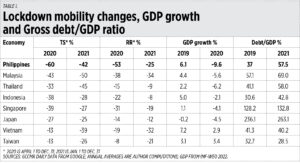Artificial intelligence, data analytics to boost financial firms’ cybersecurity

INTEGRATING artificial intelligence (AI) and data analytics in banks’ cybersecurity measures could help them better detect and combat potential threats.
“These technologies power vital cybersecurity capabilities, such as attack surface risk management (ASRM) and extended detection and response (XDR),” Trend Micro Philippines Country Manager Ian Felipe said in an e-mail to BusinessWorld.
“Real-time threat intelligence would make fraudulent and suspicious activities easier to detect while allowing organizations to respond to threats immediately, all from one consolidated platform. This would empower BFSI organizations to proactively combat cybercrime and contribute towards enhancing the overall safety of the sector,” Mr. Felipe said.
ASRM provides continuous attack surface discovery and real-time risk assessment, while XDR enables endpoint controls and organization-wide data collection and correlation across the whole information technology infrastructure, he added.
“By combining ASRM and XDR in a unified cybersecurity platform like Trend Vision One, BFSI (banking, financial services and insurance) organizations can gain increased visibility and detailed insights into potential threats,” Mr. Felipe said.
Trend Vision One is Trend Micro Philippines’ real-time threat intelligence platform that BFSI organizations can use to mitigate risks, protect assets, and enhance security to help address some of the top risks these firms face.
These risks include negligent insiders, shortage of qualified personnel and organizational misalignment and complexity according to Trend Micro’s Cyber Risk Index study for the second half of 2022.
The study showed that 80% of respondents said they are “somewhat to very likely”to experience a breach in customer data (82%), intellectual property (82%), or a successful cyberattack (87%) in the next 12 months.
Among the cyber threats expected by the respondents are ransomware, business e-mail compromise, botnets, watering hole attacks, and denial of service.
Addressing the Philippines’ ongoing cybersecurity talent shortage could also help improve cybersecurity in the country, he added.
“Currently, the Philippines only has around 200 cybersecurity experts in the country and this number is insufficient to address even just the needs of the BFSI sector alone. Therefore, more needs to be done to upskill talent — both fresh graduates and mid-career professionals. Encourage them to take on the mantle of cybersecurity personnel,” Mr. Felipe said. — A.M.C. Sy




